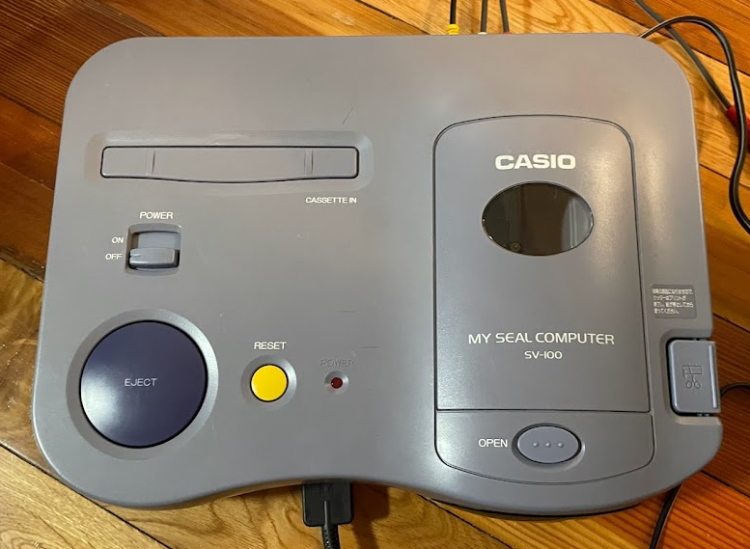


The CXA1645M would be a prime place to add an RGB mod, if one wanted better output. This creates the composite video output, which just goes to an RCA plug on the back. Near the CPU we can also see a Sony CXA1645M RGB encoder. Inside, we see the bulk of the circuitry is here, including the SH7021 CPU. The cartridge eject mechanism, which uses a spring, is a huge pain to remove it was an even bigger pain to put back on at the end. Notice that the button with scissors on it controls a small bit of scissors that is completely internal to the console, so that there’s no risk of a child cutting themselves. In the bottom, we see two circuit boards, and the printer mechanism. Inside we see that only a single LED is connected to the top now. It’s just held together by cross-head screws on the bottom somewhat oddly, as the cartridges do use the infamous “Gamebit” security screws. The printer prints small stickers, or as the console calls them, “seals”. The printer is, as we’ll see, kind of the whole point of the Loopy. This slot on the front is where the printer outputs.

For the Loopy, though, they get the job done and it’s comfortable in the hand. But sadly you wouldn’t want to play King of Fighters ‘97 on this the buttons don’t feel great, with very little travel. The Casio Loopy’s controller is a pretty simple affair amusingly, the layout may be better for Neo Geo games than SNK’s own Neo Geo CD pad, with the face buttons laid out in a semicircle. I’m not sure how much the SH7201 has changed over that time it seems to be an SH-1 system, as opposed to the SH-2 used in the 32X and Saturn, and the SH-4 used in the Dreamcast. This family of CPUs is probably more famous for its use by Sega, but the SH7201 used in the Loopy appears to be still in production by Renesas. The Casio Loopy is a 32-bit machine with a SuperH CPU, released in 1995. They made some MSX computers, and the Casio PV-1000 and PV-2000 consoles in the early 80’s, but the Loopy has pretty much nothing to do with those. Let’s talk about the Casio Loopy! Just in case-ioĬasio is of course a big name in electronics, but they’ve not shown up on this blog at all before. Would you really learn anything useful about Galaga from his review? And what is the point of this thought? Nothing, totally irrelevant. Even the high score concept is foreign to a man who doesn’t know about the modern arabic numerals, and anyway, he gets way too interested when you happen to mention a CRT monitor’s discharge could kill a man. He lacks the knowledge of space that even children have today, and certainly can’t recognize a spaceship he keeps going on about how using arrows against bugs is a waste of a perfectly good arrow. Imagine asking Julius Caesar to review the arcade game Galaga.


 0 kommentar(er)
0 kommentar(er)
